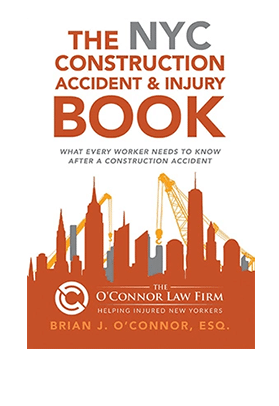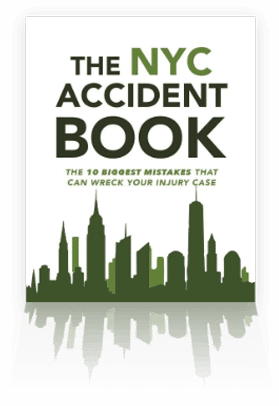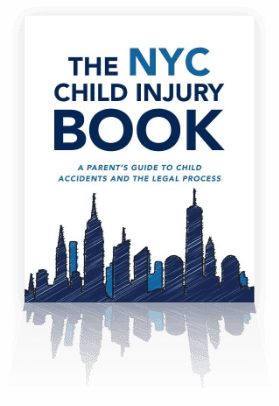New York Painter Accident Attorney
Learn More about Your Legal Rights After a New York Accident
Painters often work at great heights, which increases the risk of an accident. To protect them, contractors should erect scaffolding or ladders which provide a safe platform on which to do their work. Unfortunately, many painters fall and suffer serious, possibly job-ending injuries.
At The O’Connor Law Firm, we help accident victims and their families receive justice following an accident. We have deep experience in construction accident law, including laws regulating scaffolding. Please contact our New York painter accident lawyer today to learn more.
How Painters Are Injured on the Job
If all goes well, a painter should suffer no more than some splattered paint on their clothes at the end of a hard day’s work. Unfortunately, many painters are seriously injured in the following accidents:
- Falls. A painter can slip off a ladder or scaffolding, or these platforms can collapse underneath them. Either way, the painter tumbles to the ground and can suffer serious injuries when they land.
- Toxic exposure. Paints, solvents, and mold can all contribute to toxic poisoning. Painters should have proper personal protection equipment (PPE), but it often is old or ineffective.
- Repetitive stress. Constant movement can lead to degenerative injuries, particularly in the joints. Constant shuffling, kneeling, stretching, pulling, or straining can lead to crippling pain.
- Falling objects. Construction workers are constantly lifting and transporting heavy materials, any of which could fall on a painter and cause injury.
- Fire or explosion. Combustible materials at a construction site can blow up and burn a painter, just as they can injure anyone onsite.
Any of these accidents could result in devastating injuries. Many of our clients are struggling with moderate or severe brain injuries, fractures, back injuries, and possibly paralysis.
Why Workers Fall
Fall accidents are probably the most common ones painters face. There are many contributing factors in these accidents, such as:
- Improperly constructed scaffolding. Scaffolding might have been constructed in a slipshod manner. The planks could slope at a dangerous angle or weakened frames might collapse. Scaffolding should be constructed on level surfaces but is sometimes constructed in haste.
- No fall restraint systems. Harnesses and nets can prevent a worker from falling to the ground and should be provided when painters work at higher elevations. Sadly, many contractors fail to provide these safety systems, and workers tumble to the ground after slipping off a ladder or platform.
- Ladder defects. Some ladders have design or manufacturing defects, which make them dangerous as soon as they leave the factory. Other ladders slowly fall into disrepair due to lack of maintenance. For example, a ladder could become rusted out, causing steps to collapse.
- Unsafe surfaces. Workers need a safe, clean surface. However, debris, holes, and spilled liquids (like oil) can make the boards or rungs slippery. Painters can slip off and fall to the ground.
- Lack of protective equipment. Painters need boots to provide a solid grip on boards and rungs. Worn out boots or those with smooth soles are dangerous.
- Crowding. Too many painters on a platform increases the odds of workers bumping into each other and possibly falling.
Ladder Safety
Both state and federal regulations instruct contractors in the proper installation and maintenance of scaffolding. For example, Section 240 of the Labor Laws requires that scaffolding hold at least four times the maximum weight which will be put on it. The law also requires the use of a safety rail with most scaffolding.
At the federal level, the Occupational Safety and Health Administration (OSHA) sets detailed rules for scaffolding and workplaces more generally. These regulations are designed to reduce the number of falls each year.
Common-sense safety practices include:
- Regularly inspecting ladders and scaffolding, preferably at least once a day before beginning to work.
- Addressing any problems or defects with ladders or scaffolding immediately. For example, dangerous ladders should be marked or disposed of so workers do not accidentally use it.
- Not overloading ladders or scaffolding.
- Setting up ladders on level ground.
- Ensuring ladders and scaffolding planks are free of liquids, such as oil or grease, which increase the odds of a slip and fall.
- Providing rubber-soled boots to workers.
- Segregating ladders away from foot traffic, which will reduce the odds of someone accidentally bumping into one.
- Training painters on the proper use of ladders and scaffolding, including how to climb and get down.
- Providing fall arrest systems, such as harnesses or nets.
Workers’ Compensation Benefits & Painter Accidents in New York
Painters typically qualify for workers’ compensation benefits after an accident (unless they are self-employed). New York requires that nearly all employers buy an insurance policy, which pays out benefits to a worker injured on the job regardless of fault.
An injured worker should qualify for:
- Medical care to treat their injuries, including rehabilitation and physical therapy.
- Partial wage replacement benefits, paid at roughly two-thirds their average weekly paycheck.
- Permanent disability benefits if they cannot ever return to work or if they suffer permanent loss of a body part.
Unfortunately, workers’ compensation doesn’t pay full lost wages or benefits or compensate you for pain and suffering. However, you might be able to bring a lawsuit if you fell on the job.
Filing a Lawsuit after a New York Painting Accident
Under the workers’ comp system, workers cannot sue their employers for negligence. However, they might still have a valid legal claim against a third party. This could include the manufacturer of a defective ladder or scaffolding. The workers’ compensation system does not prevent them from being sued.
Likewise, a painter might fall if a negligent driver swerves onto the sidewalk and knocks over the scaffolding. A painter can sue this driver for compensation.
New York’s Labor Law section 240 also gives painters critical rights if they are injured in a fall or other gravity related accident. Under the law, workers can sue a contractor or building owner when they are injured in a ladder or scaffolding accident. This law is a terrific benefit and provides an exception to the general bar on suing an employer. The law doesn’t apply to the owners of one or two-family buildings, but it covers most fall-related accidents.
How We Help Build Your Case
Many of our clients contact us from the hospital or while recovering at home. The details of the accident are a blur. One minute they were reaching out with their brush and then next they were tumbling to the ground. All they know is that they are severely hurt and afraid they can no longer work to support their families. They ask us if we can help them.
Every case begins by talking about what you remember, but we don’t stop there. At The O’Connor Law Firm, we can interview other people who saw the accident. We might also inspect any ladder or scaffolding involved to see if you can file a lawsuit. Nearby surveillance video might also have captured the fall. Once we understand the facts, we can prepare a case against the people responsible for your injuries.
Our team has a strong record of success. We can help with a workers’ compensation claim and could appeal any denial of benefits. We are also prepared to negotiate settlements with any third party responsible for your injuries or with the contractor for a Labor Law violation.
Contact Us to Speak with a New York Painter Accident Lawyer
Brian J. O’Connor is a leading advocate for construction workers, including painters. He believes that every injured worker deserves competent legal representation to navigate the often-confusing legal system. Please contact The O’Connor Law Firm today to schedule a free consultation.




